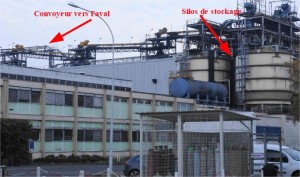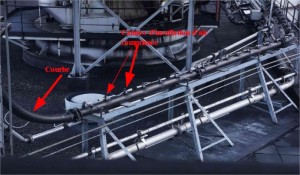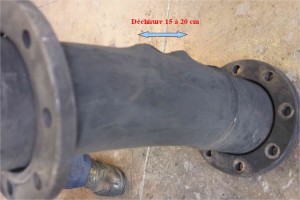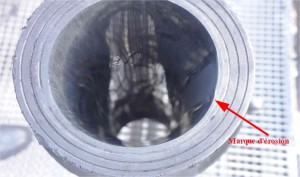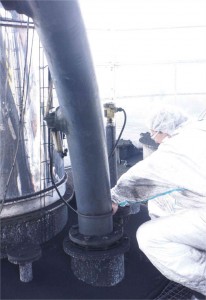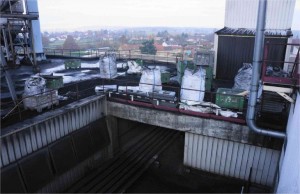At 3:40 am, a pipe broke on the roof of the rubber mix production unit at a tyre plant; 5 tonnes of carbon black were discharged into the atmosphere, fouling the roofs of facility buildings along with some 100 dwellings, public buildings, vehicles, gardens, the adjoining prairieland and grazing cattle.
Stored in bulk within silos, the carbon black was transferred pneumatically to 7 weighing hoppers located upstream of the mixing installations via 18-mm thick, high-density polyethylene (HDPE) pipes, in service for 7 years, through which propulsion was provided by “packets” of compressed air. Notified when the product intake was shut down by the programmable supply controller, the night shift observed a leak subsequent to a 15 to 20-cm longitudinal tear on one of the pipes. With carbon black spewing onto its wall, this pipe buckled at the particular spot. The polyethylene thickness around the tear was no more than a few mm.
Without any other means for conducting a non-destructive thickness test, the factory operator dismantled 2 sections of the pipe upon inspection authorities’ request. The 1st sample immediately downstream of the leak showed signs of wear, with erosion between 3 and 9 mm. The 2nd spot, where wear was less pronounced, occurred at an elbow connecting one of the most heavily used weighing hoppers. The operator replaced the damaged section. About a dozen employees cleaned the premises either by suction or with shovels. The terraces were wetted to adhere to the substance, and the collected runoff was channelled into one of the site’s 2 storm basins. A press release was issued and 2 subcontracted firms cleaned the fouled buildings. Adversely affected individuals filed a class action claim.
Erosion occurred primarily in the curved sections, i.e. where deterioration was most severe, while the residual thickness recorded on the dismantled segments helped avoid a second break over the short term. Inspectors however asked the operator to conduct a thorough inspection of the factory’s transport network within 2 weeks and, in the meantime, very closely monitor the installation, i.e. frequent visual controls, technical alarm settings, automatic shutdown of operations. Moreover, the factory operator was required to treat all observed malfunctions within the facility’s immediate vicinity. An emergency measure order was issued on 20 November. 3 days later, the operator informed the inspection authorities for classified facilities and Regional Health Agency of impurities contained in the black carbon according to the supplier’s technical data sheet. Given the elements they received, these Inspectors proposed a draft order of additional prescriptions, imposing the implementation of procedures and instructions to oversee the control of processes and operations of all black carbon installations under optimal safety conditions. This order also requested: a plan for monitoring the machinery whose malfunction may have caused the accident; a technical-economic study presenting the set of technical provisions identified to eliminate all risks of product discharge emanating in the vicinity of black carbon installations; an update to the safety report; and adoption of an internal emergency plan for the factory. The Health Agency also insisted that the operator quickly submit a health risk analysis and perform an environmental sampling campaign. Lastly, this agency asked the operator to characterise the pollutants present in a product sample used on-site. This carbon black discharge followed an initial discharge that took place on 3 September (ARIA 43281).



